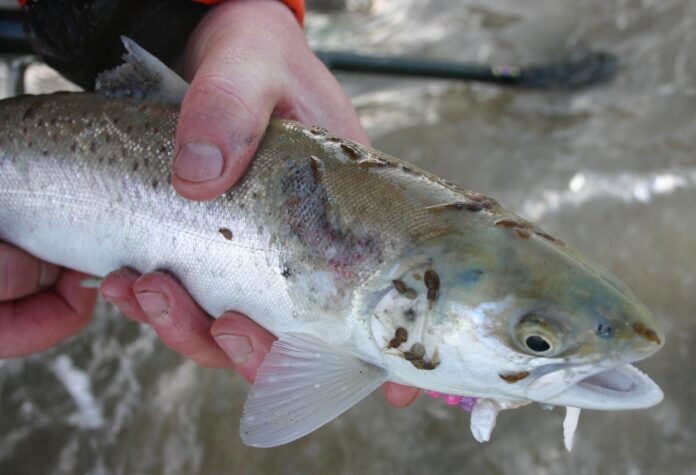Three newly-developed vaccine prototypes could provide the key to making salmon more resistant to sea lice.
Researchers at Chile’s Interdisciplinary Centre for Aquaculture Researcher (INCAR) have used reverse methods to develop potential ways of controlling sea lice outbreaks in the aquaculture sector. Using vaccine prototypes with two recombinant proteins, cathepsin and peritrophin, the scientists were able to regulate the parasites at the early stages of sea lice development.
100g Atlantic salmon were injected intraperitoneally in triplicate and divided into four experimental groups with 20 fish per tank. Peritrophin was the active ingredien in prototype A, cathepsin was the active ingredient in prototype B, prototype c contained a 50/50 mix and the final group was left unvaccinated.
Samples were taken seven days after lice were introduced to the fish, with prototype A reducing the lice levels by 24 percent, prototype B reducing it by 44 percent and prototype C cutting levels by 52 percent.
“The aquaculture industry’s interest in disease prevention methods has increased its focus on developing novel and effective fish vaccines. Nowadays, many vaccines are used for bacterial and viral control. However, vaccines for fish ectoparasites remain the major challenge in aquaculture,” researchers stated.
“The findings suggest a balance between the host’s inflammatory response and metabolic process in vaccinated fish, increasing their transcriptional activity, which can alter the early host–parasite interactions,” the study stated.
“This study uncovers molecular responses produced by three vaccine prototypes at the early stages of infestation, providing new knowledge for sea lice control in the salmon aquaculture,” the study added.









